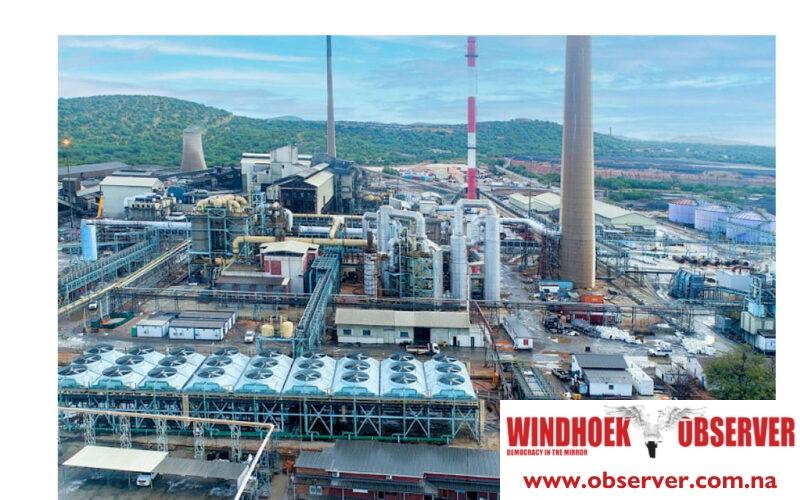CHAMWE KAIRA
Dundee Precious Metals Tsumeb has from June last year to June this year transported 198 068 tons of bulk copper complex concentrate, 34 839 tons of blister copper and 255 929 tons of sulfuric acid via TransNamib’s railway services.
“We primarily transport bulk copper complex concentrates from the coast to the smelter. Once processed, the final product, blister copper, is transported from Tsumeb to the port for easy distribution to our clients worldwide,” the company said in response to questions.
Additionally, the company utilises TransNamib to transport sulfuric acid, a byproduct of its smelting process, to its clients along the coast and in northern Namibia.
The company said it transported a total of 390 000 tons of bulk copper complex concentrate, blister copper, and sulfuric acid in 2022, and 430 000 tons in 2023, marking an increase of 40 000 tons from the previous year.
Commenting on the challenges the company faces with railway transportation, the company said firstly, the safety of its commodities due to train derailments, secondly, turnaround time of locomotives from
the port to the smelter and lastly, and shortage of rolling stock and aging fleet, both of which directly impact production.
For the current production target, the company is smelting between 200 000 to 230 000 tons of copper containing concentrates.
On the importance of service provision at the port of Walvis Bay, the company said Namport serves as the gateway between Dundee Precious Metals Tsumeb and its clientele.
“They provide offloading and loading capacity for bulk concentrates and copper blister vessels, facilitating transportation to and from Walvis Bay for our clients in South America, Europe, and Asia.”
Dundee Precious Metals aims to increase the volume of goods transported via rail, contingent upon TransNamib addressing the existing challenges.
“Currently, approximately 90% of our concentrate is transported by rail through TransNamib, with the remaining 10% by road. Our ideal plan is to transport all our concentrate by rail, as it is the most cost-effective and safest means of transport. We are committed to working with TransNamib to resolve the current challenges we face.”




